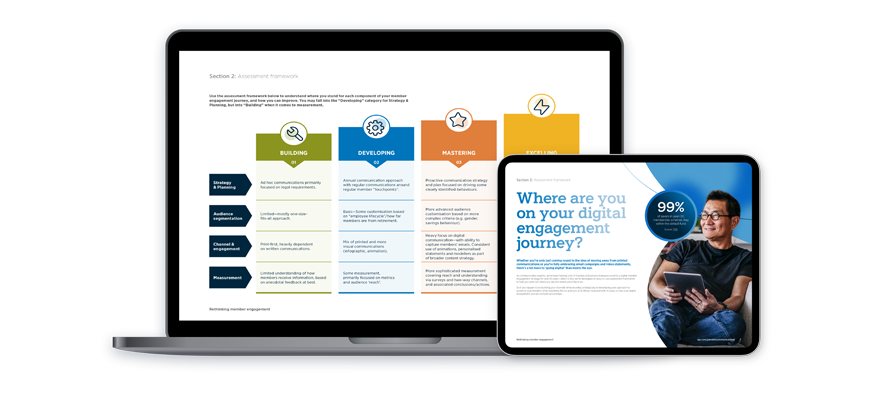As Defined Benefit (DB) schemes increasingly seek to reduce exposure to risk, buy-ins continue to be commonplace, and buy-outs are on the rise. With this comes perceived uncertainty for scheme members and a challenge for pensions communications.
According to XPS Group, full scheme transactions now “dominate” the bulk annuity landscape, constituting all £10bn worth of deals made so far this year. LCP have predicted that we’ll see a record number of buy-in and buy-out transactions in 2023, breaking the £44m record set in 2019. It’s therefore a topic we must become better at communicating.
The member view
As an industry, we’re aware that these transactions are happening all the time. We’re also aware that they’re a positive step towards enhanced benefit security for members.
That said, pensioner members whose benefits are covered by a buy-in or buy-out may not see it that way. For many, their DB pension will provide their main source of retirement income paid by an employer’s scheme they’ve spent years of their life contributing to. It’s therefore important that all pension communications are sensitive to this.
We’ve taken some example kneejerk member reactions that could cause a headache for your helpline and suggested how to carefully craft your pensions communications to prevent them.
“You’re fobbing me off to someone else!” “You’re getting rid of me!”
No member should be left feeling this way. It’s important for trustees’ communication to make it clear that this step is being taken to enhance the security of their benefits. This is good news for members, as it confirms that:
- Their pension is secure and won’t go down
- Their pension will continue to increase as it does now
- Any dependants’ benefits are also secure, and unchanged
If a buy-in is taking place, members should know that trustees retain ultimate responsibility for paying pensions.
Need help adjusting to member-first thinking? Talk to our experts.
“Isn’t it a bit risky, passing this responsibility to an insurance company?”
We can reassure members that their scheme is not alone in making this move. Many large, high-profile schemes have already successfully carried out buy-ins and full buy-outs, securing billions of pounds worth of pensions. Insurers themselves are experienced at handling these transactions and – in the case of buy-out – paying benefits to members.
Members can also be reassured in knowing that insurers are monitored and regulated by the Financial Conduct Authority, and are obliged to have money set aside (capital reserves) for their long-term financial commitments, such as paying for pensions.
“Hasn’t this cost the scheme a lot of money?”
It’s best not to go overboard with detailed explanations of why a buy-in or buy-out makes good financial sense. Members can take comfort from the fact that the trustees have received sound advice on the topic and considered multiple different insurers before proceeding. In the case of a buy-in, the scheme benefits from the risk being transferred to a third party, giving it certainty over its future costs.
“Will the insurer look after me and my pension?”
Under a buy-out, members become individual policyholders with the insurer, meaning the scheme’s liability to them ends.
Members will want to know they will receive a consistent – if not an improved – level of support and customer care from the insurer. It’s advisable to provide information about the insurer’s strengths in these areas, including any online services they may provide.
Be transparent with members, too, and mindful of what they might find when searching for the insurer online. Why not direct them to information about the insurer’s existing clients, the size of their portfolio, or testimonials from their policyholders to show there’s nothing to hide?
Above all else, put members first.
In truth, nobody can guarantee a positive response from members. It’s possible that these questions will be asked, regardless of how you communicate. However, honesty is key.
By being sensitive to the member’s perspective on a buy-in or buy-out, and being honest about why the decision was made, you can ensure that the overarching impression they are left with is a positive one.
For more information on how we can help you to help your members better understand their pensions, don’t hesitate to contact us today.
Member engagement in the digital age
Download the whitepaper

